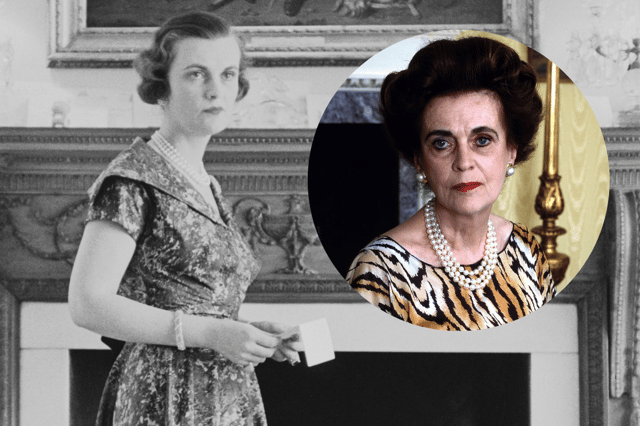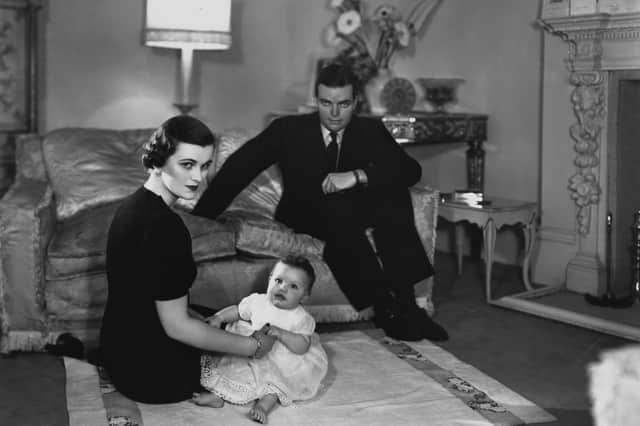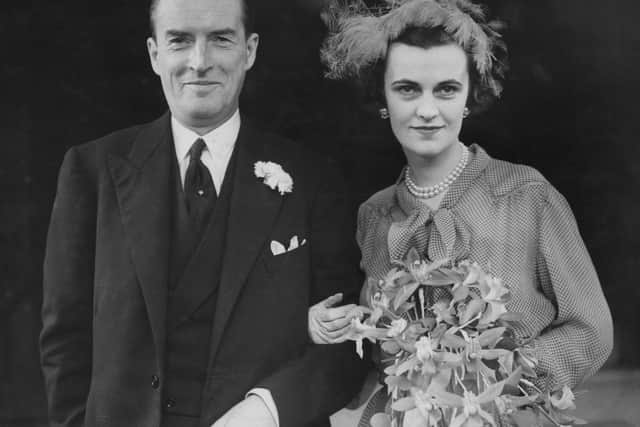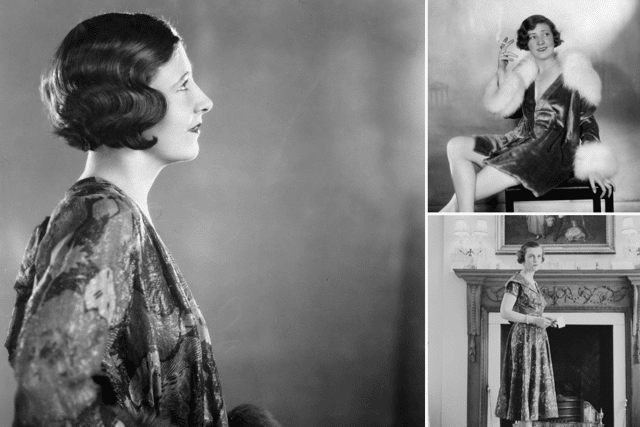Why was Margaret Campbell the “dirty Duchess of Argyll,” as new picture unveiled at National Portrait Gallery
People in this article
This article contains affiliate links. We may earn a small commission on items purchased through this article, but that does not affect our editorial judgement.


A new picture at the National Portrait Gallery has once again stirred up emotions for those Royalists of a certain age. An unseen picture of the Duchess of Argyll is one of 25 newly discovered works by 20th century pioneering photographer Madame Yevonde in June 2023.
The coloured picture shows Margaret, who was one of the most photographed women of the 1930s, as a young socialite - wearing a white dress adorned with art deco patterns and fine jewellery as she stands in an empty frame.
Advertisement
Hide AdAdvertisement
Hide AdIt once again brought attention to the life of Margaret Campbell, the once wife of the 11th Duke of Argyll, Ian Campbell, and one of the most scandalous court cases of the 20th century, with allegations of adultery, forgery, bribery and theft regarding the revelation of explicit photographs of Campbell. With it also came one of the first examples of “slut shaming” in retrospect, with the Duchess of Argyll becoming tabloid fodder and titled the “dirty Duchess of Argyll” as her divorce from the aristocracy came decades before those of Diana, Princess of Wales and Sarah, Duchess of York.
But to get to the salacious aspects of the court case between the Duke and Duchess, we first need to go back in time a little to the 1920s, shortly before her coming out as a debutante in 1930. Two years beforehand, in fact, where in 1928 Campbell had her first dalliance with scandal, admittedly one that only came out many years later - one that involved British actor David Niven.
As written in the book Niv by Graham Lord in 2004, a then 18-year-old Niven met the then 15-year-old Campbell while she was vacationing at Bembridge on the Isle of Wight and the pair ended up having a “moment” while together; that “moment” ended up seeing the future Duchess pregnant with Niven’s child, leading to what was described as a “secret abortion” as she was taken to a London nursing home. Though the details were only revealed shortly before the release of Lord’s book, she was spotted as a VIP guest at Niven’s memorial service in 1983, lending credence to the story - helped by the fact she was known to “adore” the actor until his death.


It was her first marriage that started the tabloid tattling Campbell would endure throughout her life. Even before her marriage to businessman and socialite Charles Francis Sweeny in 1933, she was embroiled in controversy. Her debutante arrival caught the eye of Charles Guy Fulke Greville, 7th Earl of Warwick, as the pair announced their engagement shortly afterwards - however she was smitten with the American socialite and so called off her engagement to the Earl and married Sweeny.
Advertisement
Hide AdAdvertisement
Hide AdMuch like the weddings of Diana, Princess of Wales and Princess Catherine after her, there was particular attention on the dress she wore; a Norman Hartnell wedding dress that stopped traffic for three hours in Knightsbridge given the publicity surrounding her choice - the dress can still be seen at the Victoria and Albert Museum in London to this day.
She became a life-long patron of the designer, according to Tatler, as well as Victor Stiebel and Angéle Delanghe. However her first marriage wasn’t quite as enduring as she and Sweeny divorced in 1947. While she had momentary relationships between marriages, she would eventually end up as the third wife of Ian Douglas Campbell, 11th Duke of Argyll in 1951.
“I had wealth, I had good looks. As a young woman I had been constantly photographed, written about, flattered, admired, included in the Ten Best-Dressed Women in the World list, and mentioned by Cole Porter in the words of his hit song "You're the Top". The top was what I was supposed to be. I had become a duchess and mistress of a historic castle. My daughter had married a duke. Life was apparently roses all the way,” she revealed in her 1975 autobiography. But it was this marriage that ultimately led to her “dirty Duchess” mantle throughout the remainder of her life.
An increasingly paranoid Duke of Argyll, himself known to be addicted to alcohol, gambling and prescription drugs, and was described as physically violent and emotionally abusive by his first two wives, believed his new wife to be committing adultery against him. He requested a locksmith break into a cupboard in their Mayfair home on 48 Upper Grosvenor Street while the Duchess was in New York. The discovery is now legendary - leading even to a television miniseries many years later - as the Duke found polaroid photographs of his wife naked, sans for one picture where she was wearing her signature three-strand pearl necklace, in the company of another gentleman.
Advertisement
Hide AdAdvertisement
Hide Ad

It was speculated that this "headless man" was the Minister of Defence Duncan Sandys (later Lord Duncan-Sandys, son-in-law of Winston Churchill), who offered to resign from the cabinet, but the Duchess never revealed who the headless man was in the pictures. Nonetheless, she counter-petitioned the divorce claiming the Duke himself had committed adultery in their marriage with none other than her stepmother, Jane Corby Wigham.
However this counter-petition collapsed a day before the hearing, due to a lack of a witness, and later had to pay a judgement of £25,000 to her stepmother, who sued her for libel, slander, and conspiracy to suborn perjury. The Duke’s divorce proceedings continued though, as his team produced a list of 88 men that the Duchess was said to have engaged sexually with. The list is said to include two government ministers and three members of the British royal family, in which the presiding judge deemed Campbell’s alleged trysts as “disgusting sexual activities.”
The judge ruled in favour of the Duke of Argyll, and in his summary called Campbell “a completely promiscuous woman whose sexual appetite could only be satisfied with a number of men. Her attitude to the sanctity of marriage was what moderns would call 'enlightened' but which in plain language was wholly immoral” by 1960s standards.
She would become tabloid fodder and dubbed the “dirty Duchess of Argyll” due to the details of the case revealing the alleged number of lovers she had and the nature of the pictures; an early case once again for “slut shaming” but also perhaps one of the first times that “revenge porn” might have been instigated, given the very public airing of those pictures.
Advertisement
Hide AdAdvertisement
Hide AdWhile the Duke of Argyll died in 1973, Margaret Campbell lived twenty years longer than her former husband but chose never to remarry. Instead, she poured her efforts into writing her memoirs, Forget Not, in 1975 and became an entertainment writer for a number of London publications, including Tatler. Her career in the public eye however had been ruined; her memoirs were ridiculed by the press and her appearances were relegated to small moments on panel television shows, including an appearance on Channel 4’s late night discussion show After Dark.


That appearance also led to her gracing the pages of the tabloid press in 1988; the discussion on that episode of After Dark was about horse racing, given it was the same day of the Grand National. She allegedly agreed to appear on the programme “to put the point of view of the horse", later walking out of the programme "because she was so very sleepy".
She died in a nursing home in Pimlico, London in 1993 and her funeral, a requiem mass, was held at Church of the Immaculate Conception, Farm Street in Mayfair. She was buried alongside her first husband, Charles Sweeny, who had died only four months earlier, in Brookwood Cemetery in Woking, Surrey. She was a cautionary tale for modern Royals, but despite her 1963 divorce proceedings and the media attention around it, the media still felt the need to pry into the sordid details of Fergie (toe sucking), Diana (images of herself with Dodi Fayed) and even Kings Charles III (Tampongate.) She was marred with controversy, unquestionably, but where she was the dirty Duchess to some, she was a personality comfortable with her sexual nature to others during a time that sexual liberation was becoming more and more evident in British society.
Comment Guidelines
National World encourages reader discussion on our stories. User feedback, insights and back-and-forth exchanges add a rich layer of context to reporting. Please review our Community Guidelines before commenting.
